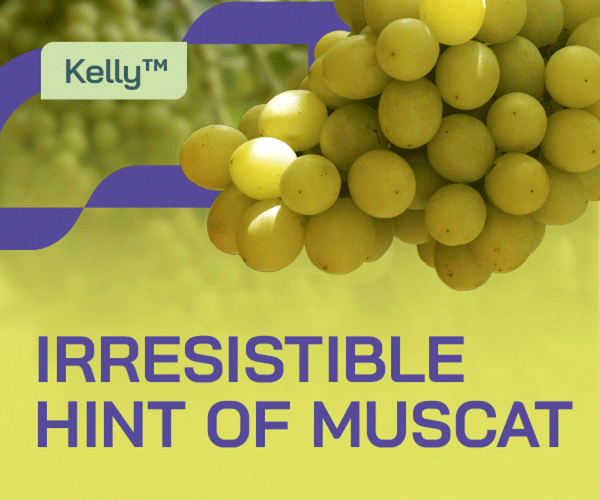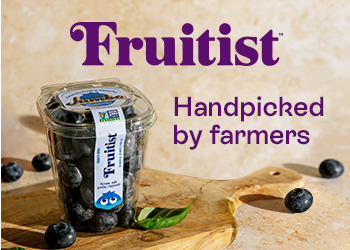Peruvian mega-irrigation project seeks new farming investors

Eight years after works began in northern Peru to move Amazonian water through a tunnel in the Andes to supply farmland, the first crops have now been planted including sugarcane, avocados and blueberries. To discuss the US$280 million Olmos Irrigation Project, www.freshfruitportal.com caught up with representatives of its Brazilian developer Odebrecht, who are looking to widen their scope of investors from around the world.
Odebrecht Infraestructura investment director Alfonso Pinillos likens the project to a road concession, with the first test drives already underway.

Juan Carlos Urteaga (Odebrecht), Mauricio Perez (Serviagro) and Alfonso Pinillos (Odebrecht).
"Instead of building a highway, we've built the aqueducts, the dam and the pipes, and instead of covering users for a road toll, we're going to cover them for the service of delivering water," Pinillos told www.freshfruitportal.com during Produce Marketing Association (PMA) Fruittrade Latin America in Santiago last week.
He added that after 25 years the project would then be returned to the Peruvian government, which supported the private-public initiative through the sale of 38,000 hectares of previously unproductive land.
"But from the point of view of the agricultural investors that participate, they are the owners of their lots; there is no expiry for them.
"We have a combination of Peruvian and foreign companies. Right now, 70% are Peruvian companies, where the main investor is Grupo Gloria with 15,000 hectares of highly mechanized sugarcane production.
"Other companies are Agroindustrial Beta and Danper Trujillo, which are large players in Peruvian agriculture."
He said a further 4,000 hectares was sold to a U.S. investment fund focused on grapes, avocados and other crops, while California's Mission Produce and Peru's Grupo Arato were also on board along with European investment houses.
"There is a combination of crops like grapes, asparagus and avocados, which are the main crops we're seeing. There are companies with a lot of experience from other areas like Piura, Lambayeque, Trujillo or Ica.
"We are in Chile in search of attracting Chilean investors, so they can invest in the project and in a way have an extension of the commercial windows that they have for avocados, grapes, blueberries and other projects."
Serviagro's Mauricio Perez, who is targeting Chilean investors, highlights the complementary nature of the Olmos project for growers from his own country.
"They have advantages that Chile doesn't have. Right now, Chile is getting drier and doesn't have water while Peru has zones where you can cross the Andes and bring water back.
"They have a labor force at a cost that we don’t have, and a climate – even though they can lack the cold hours - that gives you growth that is superior to Chile in the same time with higher yields.
"For Chile it’s not a danger, because Peru produces during times that Chile doesn't, although in general the northern part of Chilean competes in certain fruits at the same time but unfortunately with the drought that's strongly coming to a close."
He mentioned a great Chilean investment presence in Peru in sectors like retail, but only a spattering of agricultural groups were doing the same such as Verfrut, Concha y Toro, Hortifrut and Rio Blanco.
"In a short space of time there are results [from Olmos] like for Grupo Gloria which has the first development of sugarcane, and the growth has been wild. Avocados are going, there are people involved in blueberries," he said.
But Pinillos emphasized the search for new foreign investors was not limited to Chile.
"Where we’ve come knocking at the door have been investment groups who we think could have a greater appetite, because of closeness or knowledge, so definitely Chile, Argentina, Colombia, and also the United States.
"But we invite anyone else, whether they be Australians, New Zealanders, South Africans or from wherever, so they can invest in a project like this.
"Our work as a concessionaire in the project is more than just operating and maintaining the project. It's about enriching the project, and part of that is finding a combination of agricultural investors with different experiences."
Aside from the main crops signaled by existing players in the Olmos project, the executive added that fruits such as mangoes, lemons and pomegranates also had potential.
When asked about the possibility of civil unrest like the violence that has plagued many large-scale projects in Peru in recent years - particularly in mining with Newmont's Minas Congas as a prime example - Pinillos said the absence of social problems would be guaranteed.
"In some cases the mining industry has had problems in adapting to coexistence in the high Andes because previously there had been certain effects in terms of water that have affected the community. That's why in some areas there are still conflicts that are being resolved slowly, but there is progress.
"In the case of agriculture, I don't think this problem exists. Today, a third of Peru's population is involved in the agricultural industry, and what is happening is that this experience is being converted with better technology much more professional agribusiness for export, and not just for survival like we had before."
A key piece in the puzzle however is keeping good relations with the Olmos community, and a big part of this will be involving smallholder farmers who already own 5,500 hectares of land in the nearby Viejo Valley; land which is incorporated in the irrigation project.
"Today there is a distance between the agricultural businessman and the small grower with five hectares. So one of the big challenges we have is incorporating small growers.
"They haven't had much water and just 15% has been in production, but recently the project has been starting to deliver water.
"We want these small growers to enter into the productive chain, that they associate so that their parcels have a higher level and can produce quality crops and ensure a minimum price.









































